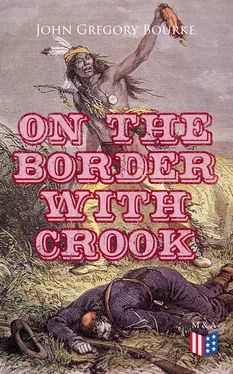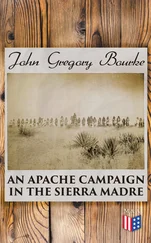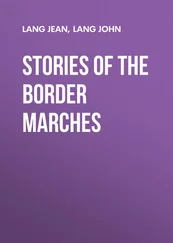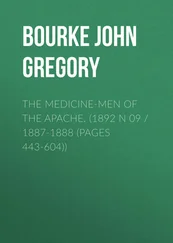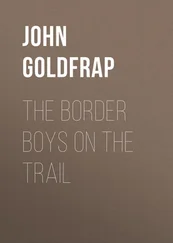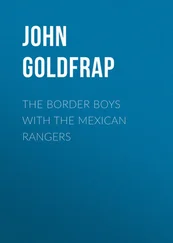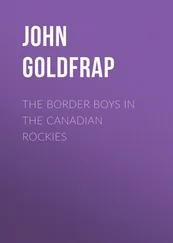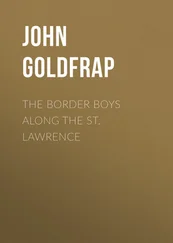So there were only three places in which people could get acquainted with one another—in the “Shoo Fly” or “Palace” restaurants; in the gambling resorts, which never closed, night or day, Sunday or Monday; and at the post-office, in the long line of Mexicans and Americans slowly approaching the little square window to ask for letters.
For the convenience of my readers and myself, I will take the liberty of presenting some of my dead and gone friends in the “Shoo Fly,” where we can have seats upon which to rest, and tables upon which to place our elbows, if we so desire.
But first a word or two more about Tucson itself.
It was in those days the capital of the Territory of Arizona, and the place of residence of most of the Federal officials. Its geographical situation was on the right bank of the pretty little stream called the Santa Cruz, a mile or more above where it ran into the sands. In round figures, it was on the 32d degree of north latitude, and not far from the 112th degree west from Greenwich. The valley of the Santa Cruz, although not much over a mile and a half wide, is wonderfully fertile, and will yield bountifully of all cereals, as well as of the fruits of the south temperate or north tropical climes, and could easily have supported a much larger population, but on account of the bitter and unrelenting hostilities waged by the Apaches, not more than 3,200 souls could be claimed, although enthusiasts often deluded themselves into a belief in much higher figures, owing to the almost constant presence of trains of wagons hauled by patient oxen or quick-moving mules, or “carretas” drawn by the philosophical donkey or “burro” from Sonora. The great prairie-schooners all the way from the Missouri River made a very imposing appearance, as, linked two, and even three, together, they rolled along with their heavy burdens, to unload at the warehouses of the great merchants, Lord & Williams, Tully, Ochoa & De Long, the Zeckendorfs, Fish & Collingwood, Leopoldo Carrillo, or other of the men of those days whose transactions ran each year into the hundreds of thousands of dollars.
Streets and pavements there were none; lamps were unheard of; drainage was not deemed necessary, and water, when not bought from the old Mexican who hauled it in barrels in a dilapidated cart from the cool spring on the bishop’s farm, was obtained from wells, which were good and sweet in the first months of their career, but generally became so impregnated with “alkali” that they had to be abandoned; and as lumber was worth twenty-five cents a foot, and therefore too costly to be used in covering them, they were left to dry up of their own accord, and remain a menace to the lives and limbs of belated pedestrians. There was no hint in history or tradition of a sweeping of the streets, which were every bit as filthy as those of New York.
The age of the garbage piles was distinctly defined by geological strata. In the lowest portion of all one could often find arrowheads and stone axes, indicative of a pre-Columbian origin; superimposed conformably over these, as the geologists used to say, were skins of chile colorado, great pieces of rusty spurs, and other reliquiae of the “Conquistadores,” while high above all, stray cards, tomato cans, beer bottles, and similar evidences of a higher and nobler civilization told just how long the Anglo-Saxon had called the territory his own.
This filthy condition of the streets gave rise to a weird system of topographical designation. “You want to find the Governor’s? Wa’al, podner, jest keep right down this yere street past the Palace s’loon, till yer gets ter the second manure-pile on yer right; then keep to yer left past the post-office, ’n’ yer’ll see a dead burro in th’ middle of th’ road, ’n’ a mesquite tree ’n yer lef’, near a Mexican ‘tendajon’ (small store), ’n’ jes’ beyond that ’s the Gov.’s outfit. Can’t miss it. Look out fur th’ dawg down ter Muñoz’s corral; he ’s a salviated son ov a gun.”
It took some time for the ears of the “tenderfoot” just out from the States to become habituated to the chronology of that portion of our vast domain. One rarely heard months, days, or weeks mentioned. The narrator of a story had a far more convenient method of referring back to dates in which his auditory might be interested. “Jes’ about th’ time Pete Kitchen’s ranch was jumped”—which wasn’t very satisfactory, as Pete Kitchen’s ranch was always getting “jumped.” “Th’ night afore th’ Maricopa stage war tuck in.” “A week or two arter Winters made his last ‘killin’ ’in th’ Dragoons.” “Th’ last fight down to th’ Picach.” “Th’year th’ Injuns run off Tully, Ochoa ’n’ DeLong bull teams.”
Or, under other aspects of the daily life of the place, there would be such references as, “Th’ night after Duffield drawed his gun on Jedge Titus”—a rather uncertain reference, since Duffield was always “drawin’ his gun” on somebody. “Th’ time of th’ feast (i.e., of Saint Augustine, the patron saint of the town), when Bob Crandall broke th’ ‘Chusas’ game fur six hundred dollars,” and other expressions of similar tenor, which replaced the recollections of “mowing time,” and “harvest,” and “sheep-shearing” of older communities.
Another strain upon the unduly excitable brain lay in the impossibility of learning exactly how many miles it was to a given point. It wasn’t “fifty miles,” or “sixty miles,” or “just a trifle beyond the Cienaga, and that’s twenty-five miles,” but rather, “Jes’ on th’ rise of the mesa as you git to th’ place whar Samaniego’s train stood off th’ Apaches;” or, “A little yan way from whar they took in Colonel Stone’s stage;” or, “Jes’ whar th’ big ‘killin’ ’ tuk place on th’ long mesa,” and much more of the same sort.
There were watches and clocks in the town, and some Americans went through the motions of consulting them at intervals. So far as influence upon the community went, they might just as well have been in the bottom of the Red Sea. The divisions of the day were regulated and determined by the bells which periodically clanged in front of the cathedral church. When they rang out their wild peal for early Mass, the little world by the Santa Cruz rubbed its eyes, threw off the slight covering of the night, and made ready for the labors of the day. The alarm clock of the Gringo might have been sounding for two hours earlier, but not one man, woman, or child would have paid the slightest attention to the cursed invention of Satan. When the Angelus tolled at meridian, all made ready for the noon-day meal and the postprandial siesta; and when the hour of vespers sounded, adobes dropped from the palsied hands of listless workmen, and docile Papagoes, wrapping themselves in their pieces of “manta” or old “rebosos,” turned their faces southward, mindful of the curfew signal learned from the early missionaries.
They were a singular people, the Papagoes; honest, laborious, docile, sober, and pure—not an improper character among them. Only one white man had ever been allowed to marry into the tribe—Buckskin Aleck Stevens, of Cambridge, Mass., and that had to be a marriage with bell, book, and candle and every formality to protect the bride.
I do not know anything about the Papagoes of to-day, and am prepared to hear that they have sadly degenerated. The Americans have had twenty years in which to corrupt them, and the intimacy can hardly have been to the advantage of the red man.
Table of Contents
SOME OF THE FRIENDS MET IN OLD TUCSON—JACK LONG—HIS DIVORCE—MARSHAL DUFFIELD AND “WACO BILL”—“THEM ’ERE’S MEE VISITIN’ KEE-YARD”—JUDGE TITUS AND CHARLES O. BROWN—HOW DUFFIELD WAS KILLED—UNCLE BILLY N—— AND HIS THREE GLASS EYES—AL. GARRETT—DOCTOR SEMIG AND LIEUTENANT SHERWOOD—DON ESTEVAN OCHOA—BISHOP SALPOINTE—PETE KITCHEN AND HIS RANCH.
Читать дальше
